“Trees exhale for us so that we can inhale them to stay alive.
Munia Khan
Can we ever forget that?”
Caring for our trees properly begins with understanding how they live. We can avoid harmful mistakes if we understand what a tree needs for healthy roots, bark, and leaves. Human-caused damage to tree roots and bark is often accidental. [see “For the Love of Trees” Part 1 and Part 2] Unfortunately, the most common damage humans do to the leaf canopy is intentional.
The practice of “topping” a mature tree — cutting the trunk and major branches to an arbitrary height – was once thought to reduce the likelihood of “top-heavy” trees falling in storms. But topping is actually counter-productive and dangerous. The result is a weakened tree that is more likely to fail — and fall.
Topping a tree drastically changes its shape, and ignores the reason nature has shaped trees the way they are. Tree branches reach upward and outward, away from the trunk, dividing again and again, becoming smaller at every division as they extend to the outermost twigs holding leaves. The purpose of this shape is to provide the maximum exposure for the largest number of leaves to absorb sunlight coming from above.
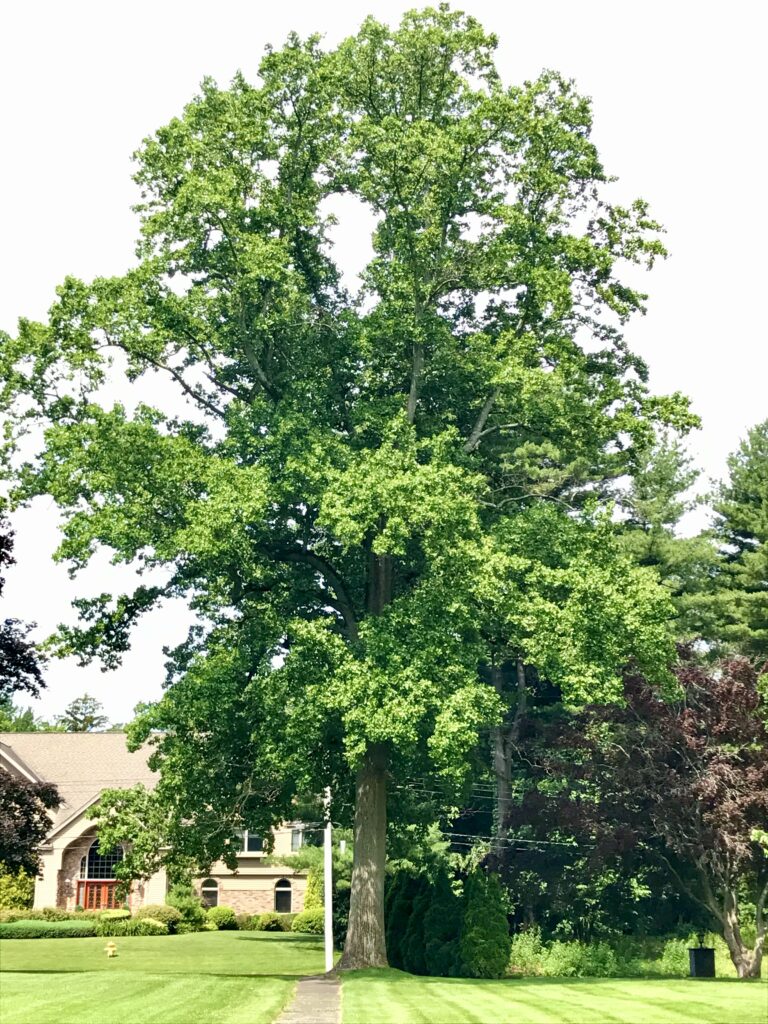
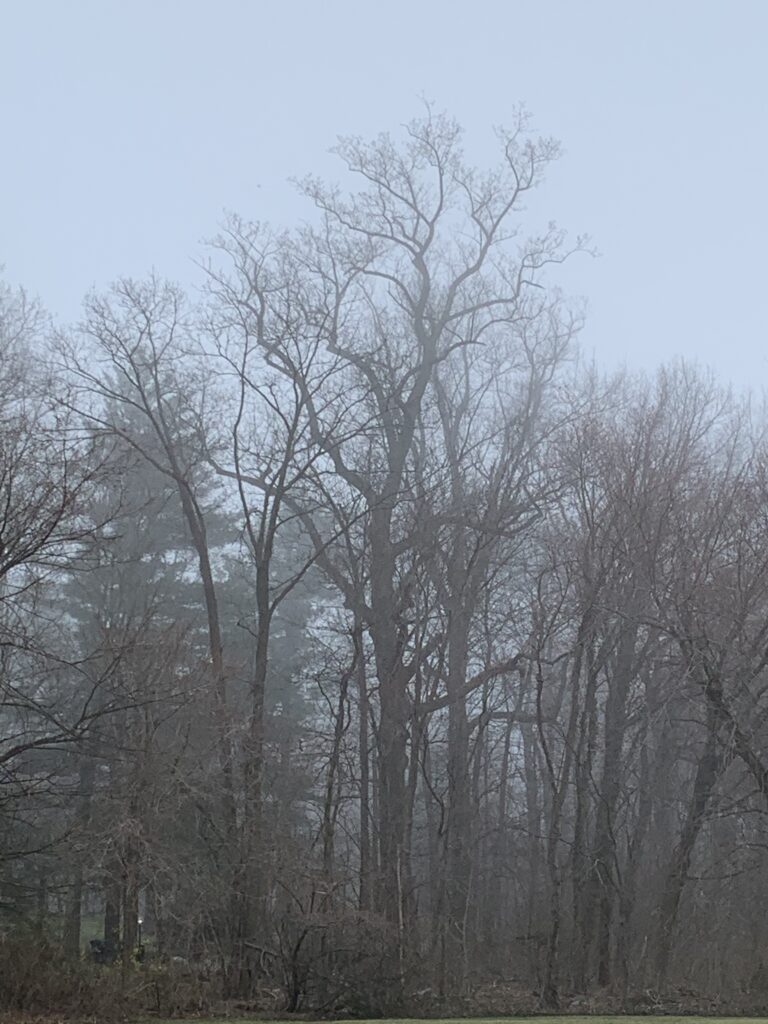
Leaves need sunlight for photosynthesis — the miraculous process that turns sunshine, carbon dioxide, water, and soil into the oxygen we breathe. But oxygen is just a happy by-product of photosynthesis. The real purpose, as far as the tree is concerned, is to manufacture carbohydrates to feed the tree. Trees bring water and soil nutrients absorbed by the roots up through the living outer layers of the bark to the leaves. The carbohydrates manufactured by the leaves during photosynthesis are then carried back down to feed the living bark, including all the growing branches and twigs, and the roots. Topping is a brutal interruption of this process.
A healthy tree is balanced — both nutritionally and structurally. Nutrition is balanced because the root system absorbs just enough nutrients and water to supply the leaves, and the leaves manufacture enough carbohydrates to feed the growing trunk, branches, and roots. Structurally, the tree balances itself with a root system that grows strong and wide to anchor the heavy trunk and the weight of the leaf canopy. As the tree matures, the roots, trunk, and leaf canopy continue to grow in proportion to one another — and in balance.
Topping a tree, by removing most of its essential leaf canopy, suddenly and radically reduces the tree’s ability to manufacture enough nutrients to support its living trunk and root system.
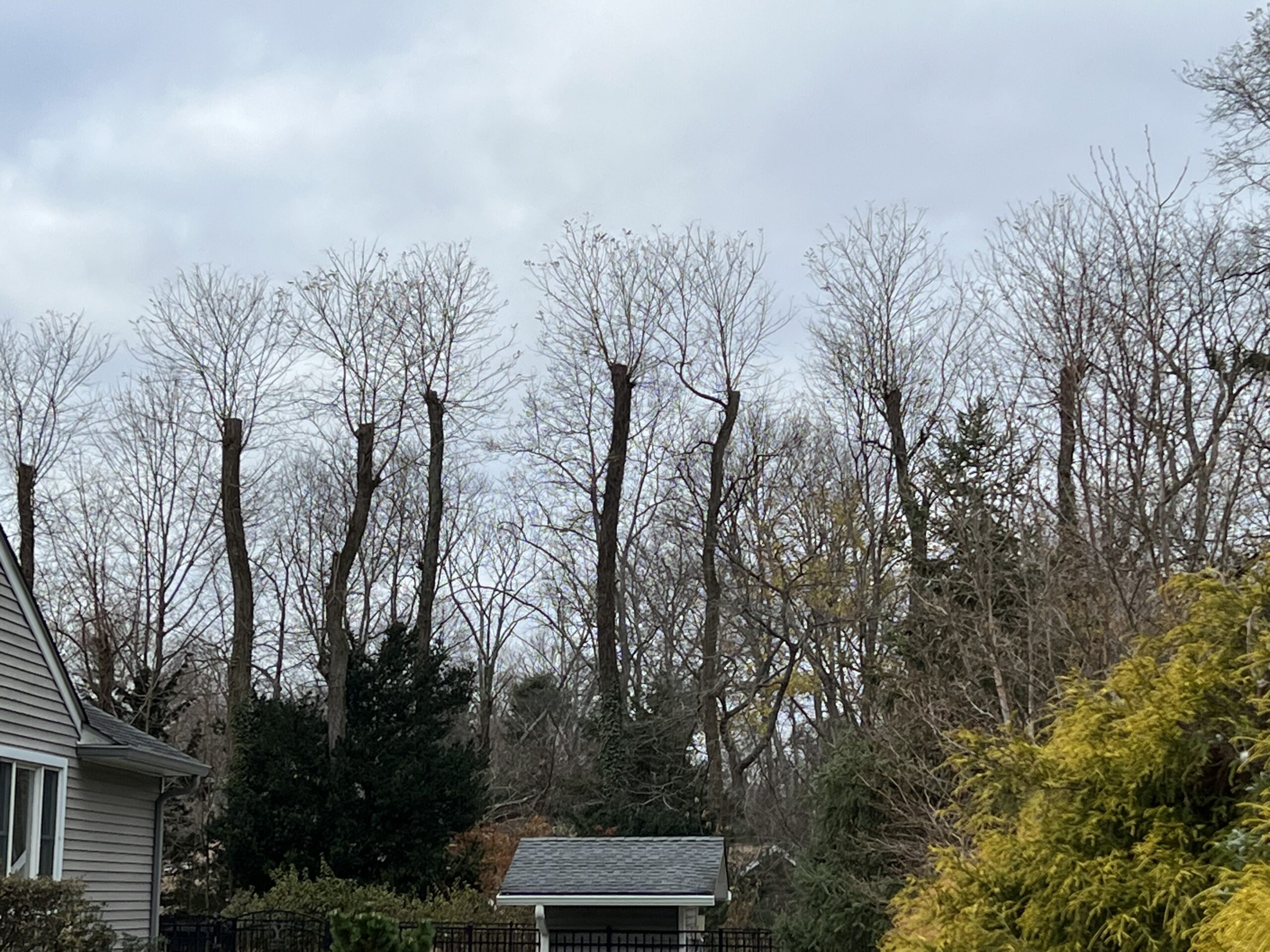
A topped tree may begin putting out twiggy little branches, called “suckers” or “water sprouts” in an effort to quickly add more leaves. Even if leaves develop, however, the thin new branches are incapable of carrying enough nutrients back down to feed the mature tree trunk and roots. Deprived of the carbohydrates essential for survival, the roots farthest from the tree will wither and die, and the trunk will weaken, destabilizing the tree.
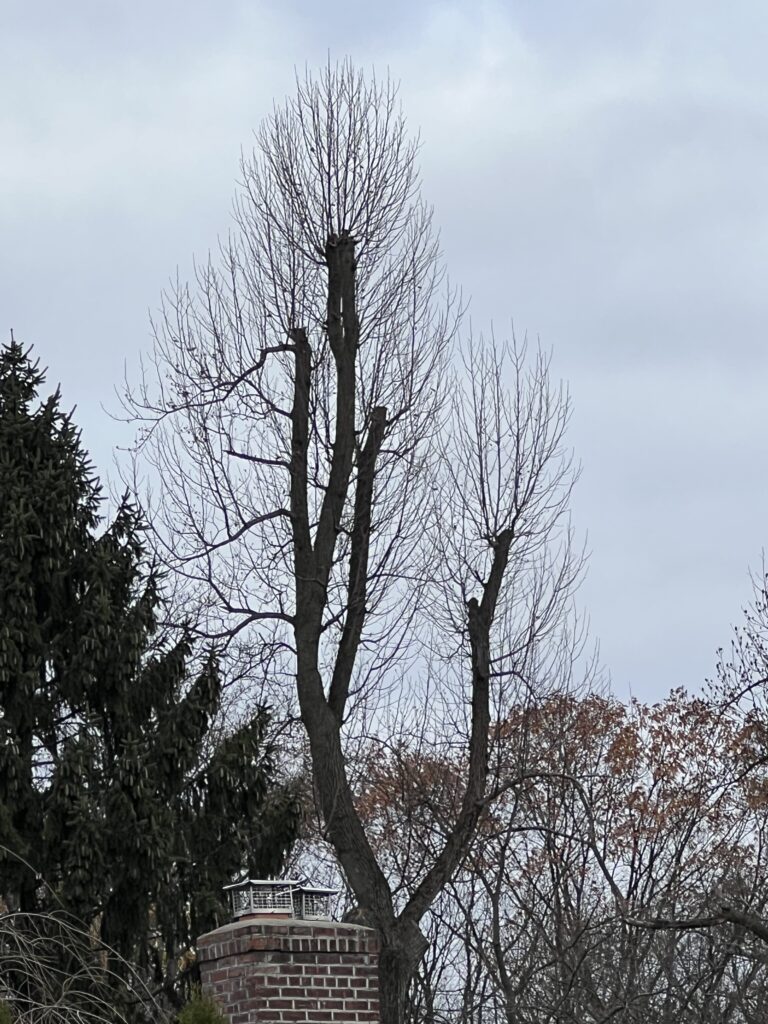
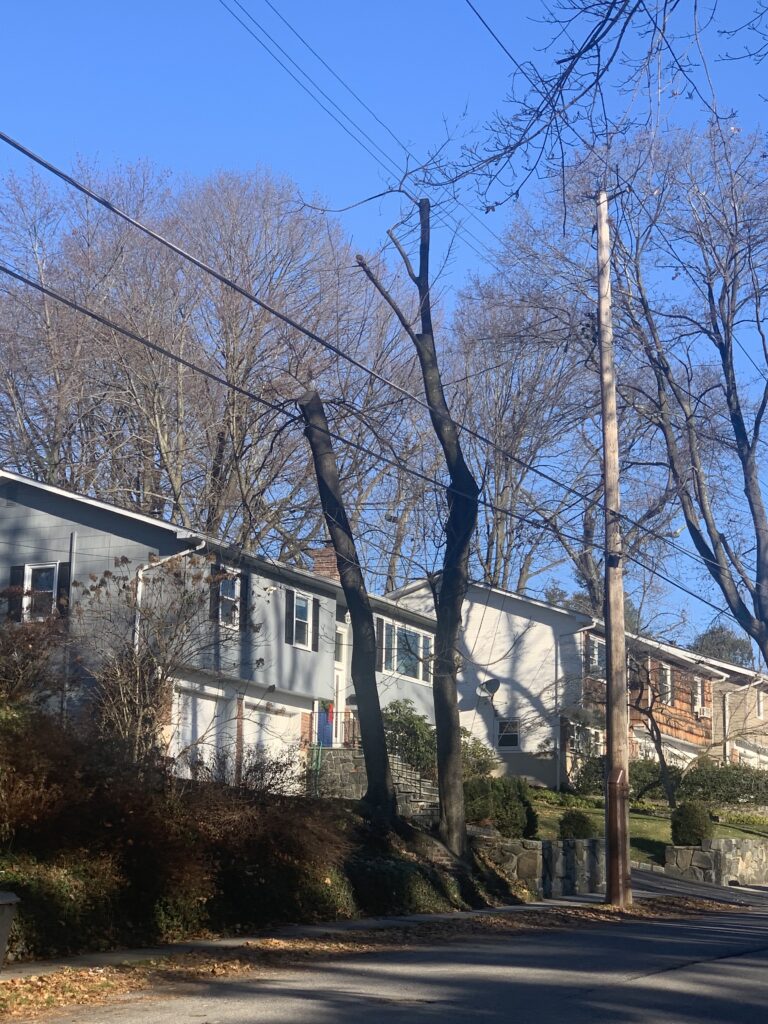
Photo: Guy Pardee
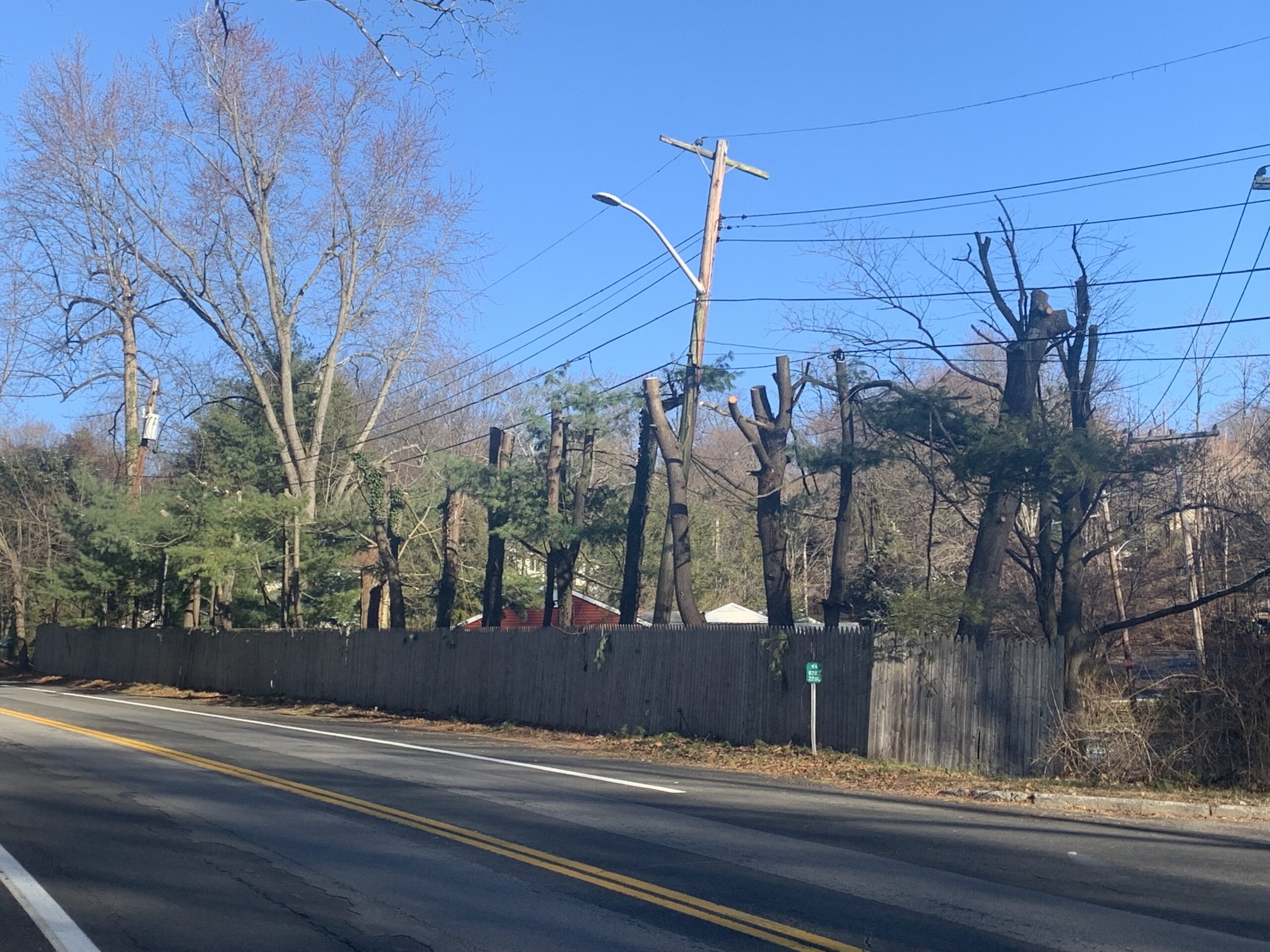
Photo: Guy Pardee
There is a very strong consensus among modern tree experts that topping is a bad practice. So why do we see so many examples of topped trees all around us?
While most responsible tree companies refuse to top trees, or at least try to talk property owners out of it, homeowners often insist on topping and look for a tree service that will comply. Reasons given for topping trees include fear of trees falling, a desire to open up views, to increase light for lawn or solar panels, or simply to make trees shorter. All of these may be good reasons for appropriate tree pruning, which is completely different from topping. It is important to understand the difference.
Trees should be pruned to remove dead, weak, diseased, or crossing branches that can damage bark. Pruning by experienced, certified arborists is part of responsible tree care. And a qualified arborist can address aesthetic issues as well as tree health. Selective pruning at branch nodes can lighten the canopy, allowing more light underneath and improving air circulation. Careful thinning can reduce excessive weight on particularly vulnerable branches, or reduce the reach of branches too near buildings or power lines. Strategic removal of a few branches can open a “window” to a desired view. Before deciding on any of these options, discuss your concerns with a qualified, experienced arborist to determine the wisest approach. Sometimes, removing a tree in the wrong place is the better choice.
If your tree company suggests topping, or “hat-racking” or “topping off” or “lopping” or “rounding over,” call another tree company. Trees subjected to any of these versions of topping will never look right, even if they manage to survive.
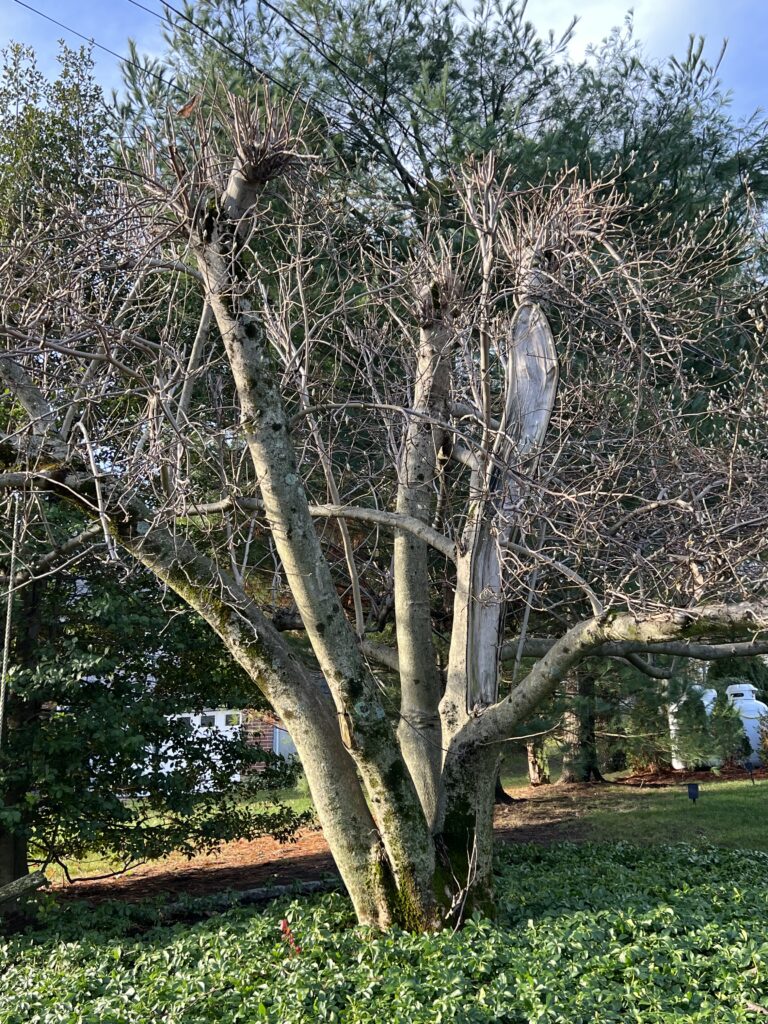
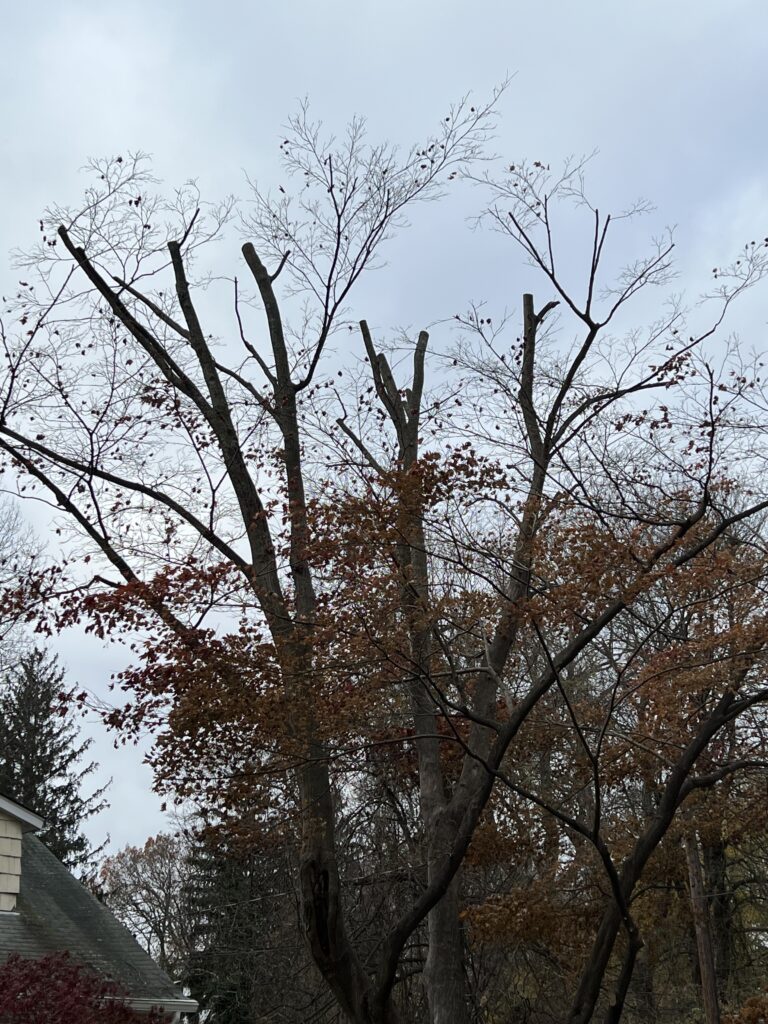
If your tree company suggests “crown reduction” to reduce the size of a tree, proceed with caution, and only after a very thorough discussion of exactly what is intended. A well-pruned tree will look natural. Fewer than 20% of the existing branches will be pruned back, and you should not be able to tell where they were. A “crown reduction” job that cuts back all or most of the branches is just another version of topping.

Photo: Guy Pardee
Trees need their full complement of leaves to stay alive and to manufacture the very oxygen we breathe. Supporting them in that precious work is our responsibility.
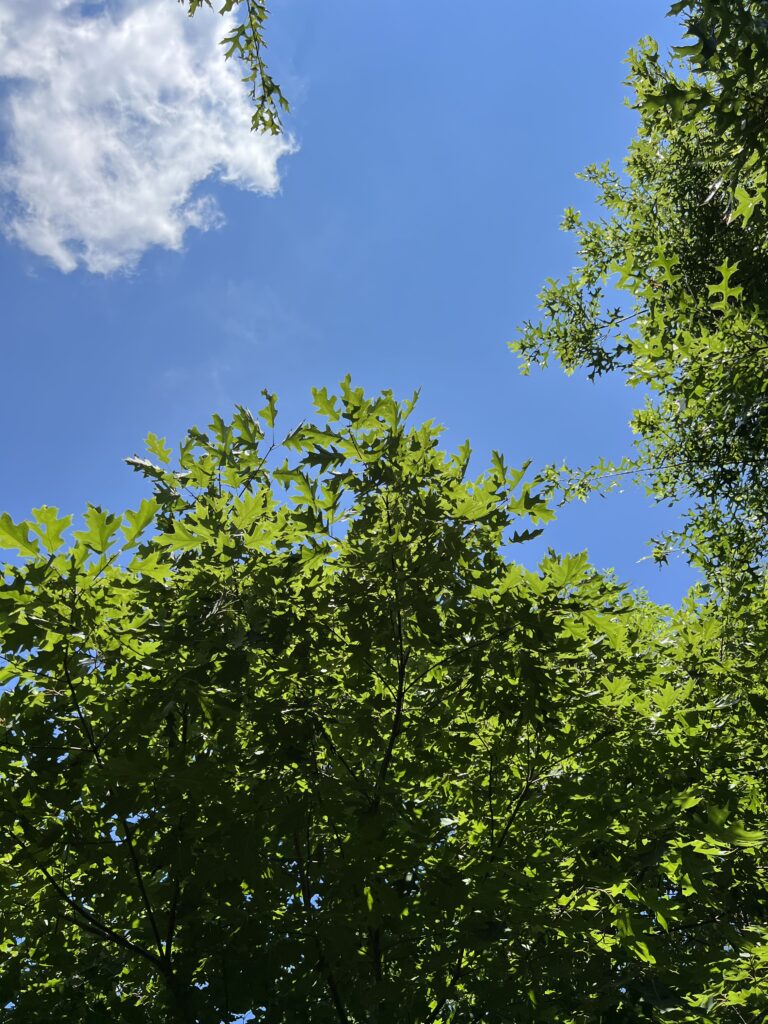

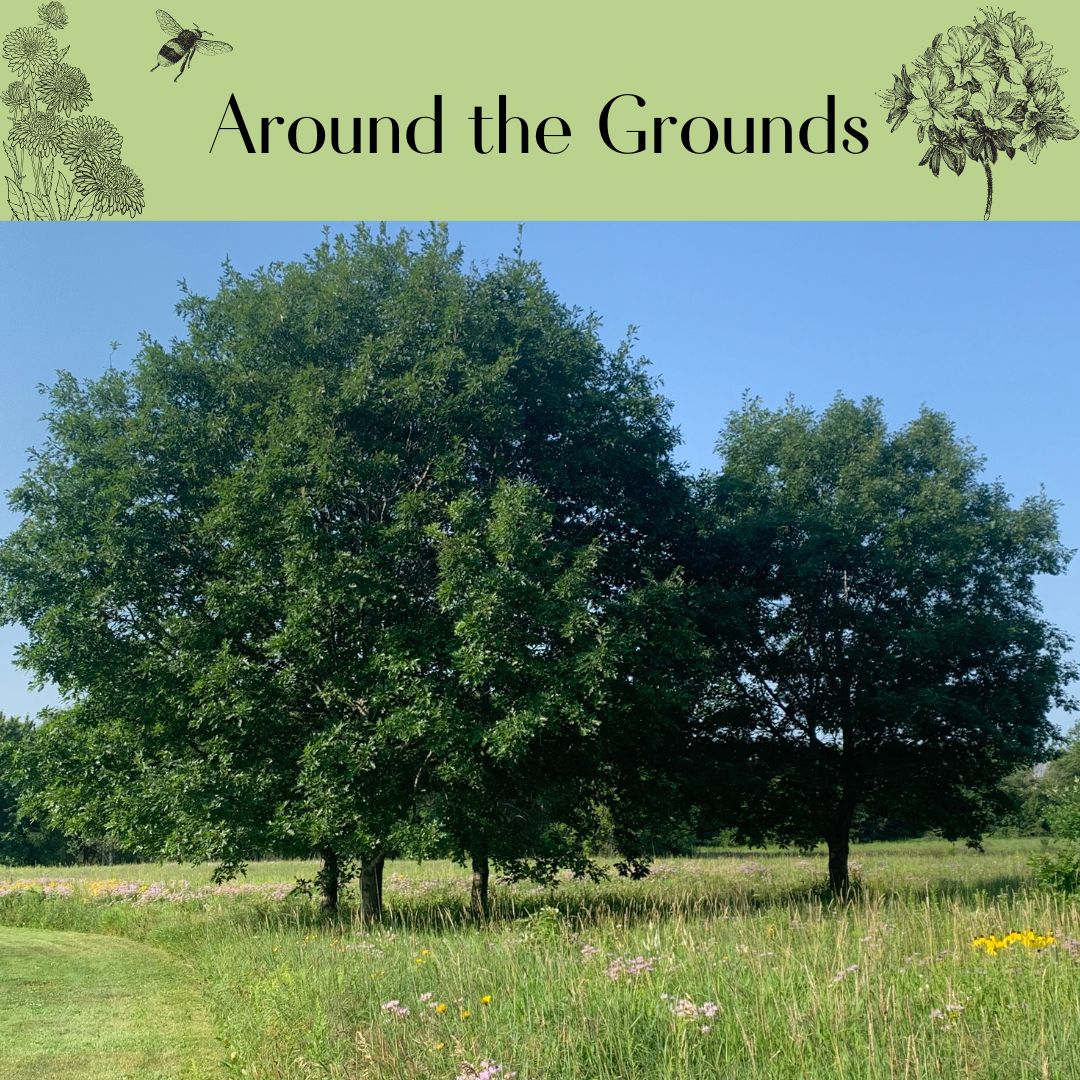
You found some pretty awful looking trees, Cathy!
I do agree that the best pruning job is one you can’t really see!
Definitely! There is a difference between pruning and topping.